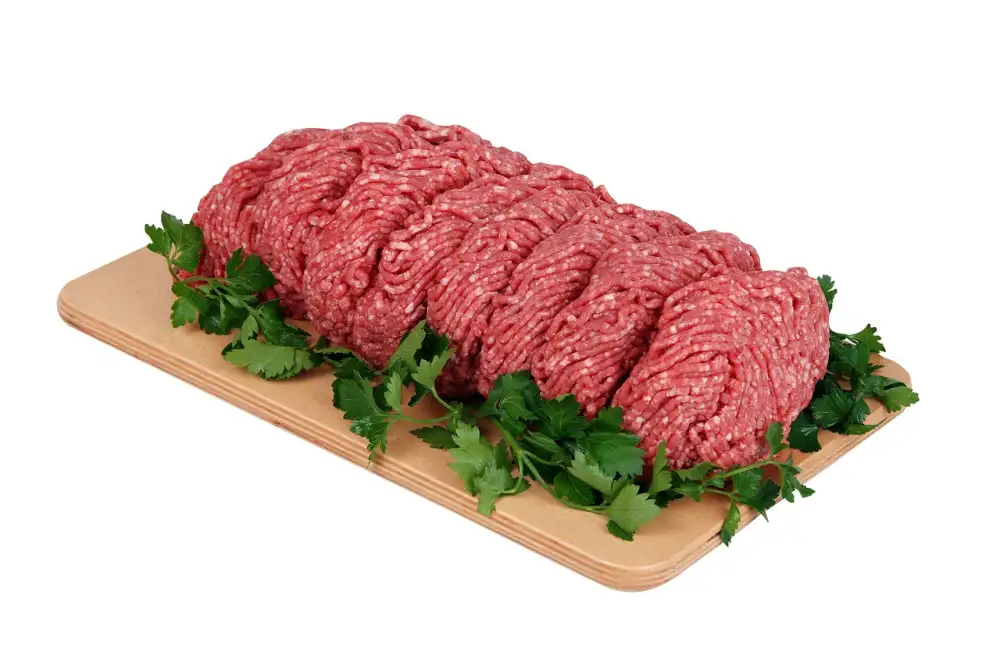Spotting Spoiled Ground Beef: A Guide to Checking Freshness

- Check the expiration date on the packaging.
- Look for any changes in color, such as gray or brown spots.
- Smell the ground beef for any sour or unpleasant odors.
- Feel the texture - fresh ground beef should be slightly moist and not slimy.
- Discard ground beef if it has a sticky or tacky surface.
- Cook ground beef thoroughly to kill any harmful bacteria if in doubt about its freshness.
Check the expiration date on the packaging.
When purchasing ground beef, the first step in ensuring its freshness is to check the expiration date on the packaging. Ground beef typically has a short shelf life due to its high perishability. Consuming ground beef past its expiration date can pose health risks as harmful bacteria may have multiplied. Always opt for ground beef with the furthest expiration date to allow ample time for consumption or freezing. Remember, proper storage and handling are crucial in maintaining the quality of ground beef.
Look for any changes in color, such as gray or brown spots.
When checking the freshness of ground beef, one important indicator to look out for is any changes in color. Fresh ground beef should have a bright red color. If you notice any gray or brown spots on the surface, it may be a sign that the meat is starting to spoil. These discolorations can indicate oxidation or bacterial growth, which can make the meat unsafe to consume. It's best to discard ground beef if you observe any unusual colors and opt for a fresh batch to ensure food safety.
Smell the ground beef for any sour or unpleasant odors.
When checking the freshness of ground beef, one important step is to smell it for any sour or unpleasant odors. Fresh ground beef should have a neutral, slightly metallic smell. If you detect a strong, off-putting odor resembling ammonia or sulfur, it is likely spoiled and should be discarded immediately. These odors indicate the presence of harmful bacteria that can cause foodborne illnesses if consumed. Trust your sense of smell as it is often a reliable indicator of the meat's freshness and safety for consumption.
Feel the texture - fresh ground beef should be slightly moist and not slimy.
When checking the freshness of ground beef, it's crucial to pay attention to its texture. Fresh ground beef should feel slightly moist to the touch and have a smooth consistency. If the meat feels slimy or sticky, it is a clear indication that it has started to spoil and should be discarded immediately. The texture of the ground beef is a key indicator of its freshness and quality, so always trust your sense of touch when assessing its condition.
Discard ground beef if it has a sticky or tacky surface.
Ground beef should be discarded if it has a sticky or tacky surface. This can indicate that the meat has started to spoil and may harbor harmful bacteria. Bacteria like E. coli and Salmonella can thrive in such conditions, posing a risk to your health if consumed. It is important to prioritize food safety and avoid consuming ground beef that shows signs of spoilage to prevent foodborne illnesses. When in doubt about the freshness of ground beef, it is best to err on the side of caution and dispose of it properly.
Cook ground beef thoroughly to kill any harmful bacteria if in doubt about its freshness.
Cooking ground beef thoroughly is essential to ensure any harmful bacteria present in the meat are killed. Ground beef should be cooked to an internal temperature of 160°F (71°C) to eliminate any potential pathogens, such as E. coli or Salmonella, that may be present due to spoilage. Using a food thermometer is recommended to accurately measure the internal temperature. It's important not to rely solely on visual cues like color or texture when determining if ground beef is safe to eat, as cooking at the correct temperature will effectively kill any harmful bacteria that may have developed.
Published: 15. 03. 2024
Category: Recipes



